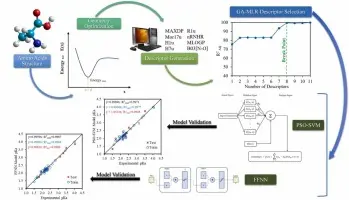pKa at the Cutting Edge: How Modern Predictive Models Shape Smarter Molecule Design
In modern molecule development, leading-edge predictors are advanced computational or experimental tools used to forecast a compound’s behavior and potential success as a therapeutic candidate. Among the many molecular properties these predictors assess, pKa is a critical parameter.
Why pKa matters
pKa (acid dissociation constant) determines the ionization state of a molecule at different pH values.
The ionization state affects solubility, permeability, absorption, distribution, binding affinity, and even toxicity.
For example, only the right ionization form may pass through cell membranes or bind effectively to a biological target.

How Leading Edge Predictors use pKa
Predictors integrate accurate pKa models (e.g., quantum mechanics, machine learning, or empirical algorithms) to forecast how a molecule will behave in various physiological environments.
pKa prediction is combined with other ADMET (Absorption, Distribution, Metabolism, Excretion, Toxicity) parameters to rank or filter drug candidates.
By understanding pKa early, researchers can optimize molecular design — modifying functional groups to adjust pKa and improve bioavailability or reduce off-target effects.
